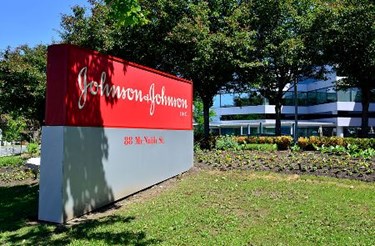J&J "Making Good Progress" With Restructuring, Mulling "Various Options" For Diabetes Business
By Jof Enriquez,
Follow me on Twitter @jofenriq

Johnson & Johnson (J&J) says it is making good progress with ongoing restructuring of its medical device business, but the company still is considering various options for its diabetes unit, including potential partnerships or divestitures.
The world' largest healthcare products manufacturer reported that global medical device sales grew 3 percent over the same period last year to $6.3 billion for the first quarter of 2017. United States Domestic and International sales rose 2.2 percent and 3.8 percent, respectively. Results were driven by strong sales of electrophysiology products in the Cardiovascular business, ACUVUE contact lenses in the Vision Care business, and endocutters in the Advanced Surgery business. However, declines in the Diabetes Care business dampened overall numbers for the device segment.
Pharmaceutical and consumer product sales during the first period were dismal, and hurt revenue totaling $17.77 billion, which was up 1.6 percent but missed analysts' expectations of $18.01 billion. Executives blamed an industry-wide slowdown for weak consumer sales and continued drug pricing competition.
"The diabetes market is very price sensitive, and (net) prices have been declining for some time," J&J CFO Dominic Caruso said in an interview with ABC News.
J&J CEO Alex Gorsky said in January that the company is "evaluating strategic options" for its Diabetes unit (excluding diabetes drugs, which it will continue to sell) as part of a restructuring of its medical device business, but said there is no definitive timeline.
Caruso told analysts during a conference call yesterday that the company still is "evaluating various options for that business, whether it be partnership or outright divestiture or whatever is best in terms of giving that position – giving that business the best position to succeed and obviously getting – if we were to divest it getting the right return for our shareholders."
Of the restructuring strategy for the overall device business set in motion over a year ago, Caruso said, "It takes time to improve a business that's so widespread and diverse as our medical device business but we're making good progress." He added that J&J is on track to achieve nearly a billion dollars of cost improvements in that business by 2018.
With the exception of the $4.3 billion acquisition of Abbott Medical Optics completed in February, that strategy so far has largely involved bolt-on acquisitions. But Caruso says it’s not purely by design.
"It's not really focused on any one business being more focused on larger or smaller, has to do with whether or not it's an area of strategic importance for us, whether the asset is one that we think we can grow better in our hands than in the hands of the previous owner," said Caruso.
In the first quarter, J&J has filled gaps in its device portfolio by acquiring Megadyne (electrosurgical devices), Torax Medical (anti-reflux implant), and Neuravi (acute ischemic stroke device).
J&J raised 2017 sales guidance from $75.4 billion to $76.1 billion, based on the assumption that it will close its planned $30 billion acquisition of Europe's biggest biotech company Actelion in the second quarter.
